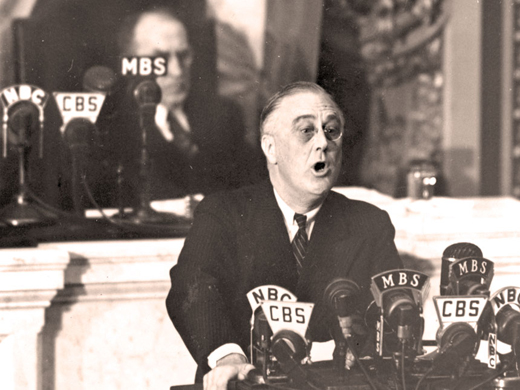FDRís First State of the Union Address

FDRís first State of the Union after winning an unprecedented third term in 1940 is considered among his most memorable and most influential speeches. Delivered on January 6, 1941, with Europe in the throes of World War II, Roosevelt opened his remarks with the warning that "at no previous time has American security been as seriously threatened from without as it is today."
After making a vigorous case for the need to supply America's European allies with arms (Roosevelt would sign the Lend-Lease Act codifying this policy just two months later on March 11, 1941), FDR closed his address by outlining the 'four essential human freedoms' he argued were the foundation for a secure, prosperous world:
- The first is freedom of speech and expression -- everywhere in the world.
- The second is freedom of every person to worship God in his own way -- everywhere in the world.
- The third is freedom from want, which, translated into world terms, means economic understandings which will secure to every nation a healthy peacetime life for its inhabitants -- everywhere in the world.
- The fourth is freedom from fear, which, translated into world terms, means a world-wide reduction of armaments to such a point and in such a thorough fashion that no nation will be in a position to commit an act of physical aggression against any neighbor -- anywhere in the world.
The first two freedoms are enshrined the Constitution, while the latter two go beyond the scope of Americaís founding document but nevertheless became the basis of the modern liberal vision both domestically and internationally.